UOF SOS: To Test or Not to Test? That is the only question.
400 healthy ostriches to be killed on suspicion and not actual scientific fact.
“Only those afraid of the truth seek to silence debate, intimidate those with whom they disagree, or slander their ideological counterparts. Those who know they are right have no reason to stifle debate because they realize that all opposing arguments will ultimately be overcome by fact.”- Glenn Beck.
Executive Summary
Avian influenza is not new. Waterfowl is the viral reservoir and spreads the virus between the Northern and Southern Hemispheres.
UOF’s 400+ ostriches are critical for antibody research, producing Immunoglobulin Y (IgY) from eggs to develop treatments for diseases like H5N1 and COVID-19, making them a unique scientific asset. Their culling is a tremendous loss to science.
Ostriches pose a low risk of spreading H5N1 to poultry or wild birds due to their flightless nature, rural farm isolation, and lower viral shedding compared to ducks, with no new cases in 10 months.
The Canadian Food Inspection Agency’s (CFIA) cull order is based on incomplete PCR testing of two dead birds, lacking an ostrich housekeeping gene (e.g., HPRT, SDHA, or YWHAZ) for validation, proper chain of custody, or reported cycle thresholds.
These birds need to be tested for H5N1 and neutralising antibodies, or there is no scientific evidence supporting this cull.
The CFIA’s push to cull the entire flock, despite no recent evidence of infection and the farm’s research value, reflects an overly rigid “stamping-out” policy, ignoring alternatives like regular testing or waiting two months to confirm the flock is virus-free.
Avian Influenza Overview
Influenza A viruses are a diverse group of RNA viruses known for their ability to infect nearly every mammalian species, including humans, pigs, horses, and even marine mammals like seals, as well as birds, which are their primary target. These viruses adapt through mutations and genetic reassortment (i.e. anitgenic shift and drift), enabling them to cross species barriers, though sustained transmission in new hosts often requires specific genetic changes. Their versatility stems from surface proteins—hemagglutinin and neuraminidase—that allow them to latch onto and invade host cells across different animals. It is the genetic differences in the hemagglutinin (HA) and neuraminidase (NA) proteins that determine the name of the subtype of the Influenza A virus (e.g. H1N1, H5N1).
Avian influenza, commonly known as bird flu, is a contagious infection caused by specific influenza A subtypes, primarily affecting birds but occasionally jumping to mammals, like humans or pigs, though human-to-human transmission remains rare. Wild aquatic birds, such as ducks and geese, serve as the natural reservoir, carrying the virus without severe symptoms and spreading it globally during migration through contaminated droppings, saliva, or mucus. Transmission occurs when healthy birds ingest or inhale the virus from tainted water, feed, or soil, or through direct contact like beak-to-beak interactions; shared equipment or human movement (e.g., contaminated shoes or vehicles) can also spread it. Strains vary in severity: low pathogenic avian influenza (LPAI) causes mild symptoms like sniffles or reduced egg production, while high pathogenic strains (HPAI), like H5N1, devastate flocks with symptoms such as haemorrhages, neurological issues (e.g., twisted necks), and mortality rates exceeding 75% in lab-tested chickens. Avian influenza has been around for hundreds, if not thousands of years and has only been hyped up in recent years.
Universal Ostrich Farm and H5N1 Outbreak
At Universal Ostrich Farm (UOF) in Edgewood, British Columbia, a unique flock of over 400 ostriches, valued not for meat or leather but for cutting-edge antibody research, faced an H5N1 outbreak in December 2024. Wild migratory birds, likely ducks carrying the virus, contaminated the farm’s open-range setup through droppings or shared water, leading to a respiratory outbreak that killed 69 of the youngest ostriches, with two dead birds testing positive for H5N1 (more on this later). Of all the ostriches on the farm, it was only the younger birds that got sick and either died or recovered. These were probably birds that were never previously exposed to HPAI H5N1, whereas all the older birds had been exposed previously and have robust immunity, as they never got sick. The yolk of eggs from older birds (birds that were at UOF prior to 2021) contained antibodies for H5N1, suggesting the presence of immunity. However, following the positive test of the two dead birds, the Canadian Food Inspection Agency (CFIA) moved to quarantine the farm and pushed for the entire flock to be killed. Sadly, this is not about science but is complete government overreach to push a policy…or an agenda.
Killing the entire ostrich flock at the Universal Ostrich Farm is like if one MP got sick and we decided to cull the whole caucus.
To think that this farm will be the epicentre of a new pandemic or that these birds pose any threat is completely unreasonable. The risk of ostriches infected with H5N1 avian influenza transmitting the virus to the poultry industry or wild birds is low to negligible, based on their biology, behaviour, and the specific context of the December 2024 outbreak at UOF in British Columbia. Unlike waterfowl, such as ducks, which are primary reservoirs and shed high viral loads in faeces for weeks, ostriches produce less virus and shed it for a shorter period, reducing their role as spreaders. Their flightless nature and terrestrial habitat mean they don’t mingle in wetlands or migrate like wild birds, limiting contact with key H5N1 vectors. The farm’s rural isolation, with no nearby poultry operations, and enhanced biosecurity measures post-outbreak (e.g., restricted access, equipment disinfection) further minimise transmission pathways. With no new cases or deaths in the surviving flock of over 400 ostriches for nearly 10 months, survivors likely developed immunity, and environmental viral persistence is unlikely, as H5N1 typically survives only weeks outside a host.
The farm’s unique role in antibody research, harvesting Immunoglobulin Y (IgY) from ostrich eggs for treatments against diseases, like H5N1 and COVID-19, underscores the low risk, as these birds are managed differently from commercial poultry. Historical data show poultry outbreaks involve rapid, high-mortality spread in dense flocks, unlike the limited 69 deaths at the farm. The CFIA’s cull order, criticised for lacking recent PCR testing to confirm ongoing infection, overlooks these factors. Regular testing could eliminate even theoretical risks of human-mediated spread or rare wild bird contact without sacrificing a valuable research flock, making the risk to poultry or wild birds remote and manageable through surveillance rather than culling.
Ostrich antibody research primarily revolves around Immunoglobulin Y (IgY), the predominant antibody class in birds, which is harvested non-invasively from the yolks of ostrich eggs. Unlike mammalian antibodies (like human IgG), IgY offers advantages such as lower production costs, reduced risk of allergic reactions in humans due to minimal binding to Fc receptors, and high yields—up to 2–4 grams of purified IgY per egg, equating to about 400 grams annually from a single ostrich. This makes ostriches an ideal “bioreactor” for scalable antibody production. Researchers immunise hens with specific antigens (e.g., viral proteins or toxins), triggering the birds’ robust immune systems to transfer targeted IgY to the egg yolk for easy extraction. The process is ethical, avoiding animal blood draws, and aligns with animal welfare standards, as endorsed by bodies like the Swiss government since 1999.
UOF in Edgewood, British Columbia—home to ~400 birds—pivoted from meat production in 2020 to antibody research via Struthio BioScience Inc. Co-owners Karen Espersen and Dave Bilinski collaborate with Dr. Yasuhiro Tsukamoto (Kyoto Prefectural University, aka “Dr. Ostrich”) and Dr. Stuart Greenberg (Ostrich Pharma USA) to extract IgY for antiviral products. Early work focused on COVID-19 antibodies, inoculating hens to neutralise SARS-CoV-2, with eggs yielding scalable quantities for diagnostics and prophylactics like mask liners. The farm’s genetically unique flock (robust immune traits) has drawn global interest, but a CFIA cull order threatens this work, highlighting a problem with the World Health Organisation (WHO) and World Organisation for Animal Health (WOAH) “stamping-out” policy for HPAI outbreaks vs research value. Sadly, even letters of support from RFK Jr. (United States Secretary of Health and Human Services) and Dr. Oz show that these birds’ antibodies could revolutionise flu prevention.
Both Dr. Byram Bridle and I provided our professional scientific opinions and support for the farm. These signs are currently posted at the farm.
Stamping-Out Policy and Government Overreach
The WHO and WOAH advocate a “stamping-out” policy for HPAI outbreaks, a scorched-earth strategy involving rapid culling of entire infected flocks—sick or not—followed by quarantine, disinfection, and intense surveillance to eliminate the virus, protect global trade, prevent wild bird die-offs, and reduce pandemic risks from potential human spillover. While effective for mass-produced poultry like chickens, where one infected bird can devastate thousands and disrupt economies, this one-size-fits-all approach is a gross misfit for UOF. Ostriches are not poultry!!! They are 6-9ft tall with 7ft wingspans, weighing ~300 pounds and living up to 50 years. They are nothing like poultry. The Canadian Food Inspection Agency’s iron-fisted order to cull the surviving flock, issued without recent PCR testing to confirm the absence of H5N1, exemplifies government overreach run amok. It ignores the ostriches’ likely immunity, negligible transmission risk after 10 virus-free months, and their irreplaceable value for antibody research, which could yield breakthroughs against diseases like H5N1 and COVID-19. This heavy-handed mandate bulldozes private property rights, trashes unique scientific assets, and dismisses the farmers’ dedication to a pioneering operation, prioritising knee-jerk trade fears over science, ethics, and reason. Simple testing could confirm the flock’s safety, rendering the cull a wasteful assault on a rare resource with global health potential.
Testing of the Ostriches with PCR
The fact that the ostriches are “infected” with HPAI boils down to the PCR testing of two dead ostriches in late December 2024. What we know is that oral and cloacal swabs samples were collected from each of the birds, sent to the Animal Health Centre in Abbotsford and tested on December 21, 2024. All the Animal Health Centre testing showed is that the “samples” were positive for “Influenza Virus H5”. This testing does not confirm whether the virus in these birds is HPAI or LPAI. These swabs were then sent to the CFIA laboratory in Winnipeg for confirmatory testing. At this point in time there was no evidence that these birds were infected with HPAI, yet CFIA initiated the cull order without waiting for confirmatory testing.
The CFIA laboratory received the samples on January 3, 2025, where they determined the H5N1 lineage by full genome sequencing (8 open reading frames) and claimed that “the HPAI strain detected in ostriches at UOF represents a unique reassortment (genotype) of H5N1 not previously identified in Canada.” The sequencing results showed that this virus is H5N1 2.3.4.4 with “gene segments PB2, PA, and NP belonging to the North American lineage and gene segments PB1, HA, NA, M and NS belonging to the Eurasian lineage.” This reassortment would be a mixture of a highly pathogenic avian influenza virus (i.e., H5N1 2.3.4.4b clade) and three of the viral chromosomes arose from a low pathogenicity avian influenza virus. [A clade is a group of viruses that usually have similar genetic changes (i.e., nucleotide or amino acid changes) and have a common ancestor.] However, there is no actual way to determine if this is a high or low pathogenic strain without testing the virus on poultry, and there would not be enough viral material or even replication-competent viral material in the collected swabs to perform the testing required to determine pathogenicity.
Problems with the Testing
Over the past 5 years, we have heard many mixed messages about PCR testing. Having been the laboratory director of two COVID-19 PCR testing laboratories in Ontario during the pandemic, I can attest that PCR is a very sensitive and specific assay for detecting viruses. The problem with the PCR test is not the “number of cycles” that the test is run for, but the manner in which the test was used. A PCR test should only be used in individuals who have symptoms to determine which pathogen they are infected with, as it can only answer “Is this sequence of DNA/RNA in my sample?” The use of PCR testing during the COVID pandemic to test asymptomatic individuals drove a casedemic [the number of PCR positive cases irrespective of clinical illness].
While many have stated that the PCR assay produces 97% false positives, this is simply untrue. This statement comes back to the Borger et al critique of Christian Drosten’s first publication to detect 2019-nCoV. What Borger et al actually said was “If someone tested positive by PCR at a threshold of >35 the probability that said person is actually infected is <3%, the probability that said result is a false positive is 97%.” That is because for most PCR assays, cycle 35 is the assay’s analytical limit of detection; beyond this point, anything that amplifies can not be considered reliable. A real-time PCR assay is usually run to 40-45 cycles to see any amplification at the limit of detection.
While the testing has shown that the two dead birds were infected by H5N1 there remain a few problems with how the samples were tested.
Despite numerous requests for testing protocols, we have received no information that clearly shows what methods were actually used.
There is also no evidence that the swabs tested were actually taken from those dead birds
There is no documented chain of custody
There is no evidence that the PCR test used amplified material from the ostriches, as no ostrich housekeeping gene was used. Housekeeping genes (also called reference genes) are essential for normalising PCR assays, particularly quantitative real-time PCR (qPCR), to account for variations in RNA input, extraction efficiency, or reverse transcription. In avian species like the ostrich, a primitive paleognath bird, specific validation is crucial. A good housekeeping gene would have been hypoxanthine phosphoribosyltransferase 1 (HRPT), succinate dehydrogenase complex subunit A (SDHA), or tyrosine 3-monooxygenase/tryptophan 5-monooxygenase activation protein zeta(YWHAZ).
On the test report, the cycle threshold (Ct) when the virus was amplified was not reported. Therefore, it cannot be determined from the report whether the birds had a high or low viral load, and thus it’s only speculative whether these birds died from or with H5N1.
There is a huge conflict of interest with the accreditation of the Abbotsford lab is through the American Association of Veterinary Laboratory Diagnosticians (AAVLD), an American NOT Canadian accreditation body, on which the Abbotsford lab director Dr. Tony Joseph, sits on the board.
Sadly, the farmers are not allowed to test their own birds without risking a $200,000 fine and 6 months in jail for each bird. Without testing these birds, there is no evidence that these birds actually carry HPAI H5N1. Therefore, CFIA’s claim that these birds carry the virus and need to be culled is purely speculative.
This is not about science, but government overreach and the pushing of a policy.
Some virologists, like Dr Angela Rasmussen, who is vile, opinionated, unprofessional, and would not be able to collect swabs or do the testing herself, believe that these birds are a health security risk and need to be culled. While it would take a week to shovel the ostrich manure pile in Dr Rasmussen’s Substack, stating that these ostriches are asymptomatic carriers and a health security risk is complete insanity. While Dr Rasmussen is correct in that it is impossible to completely rule out infectivity with PCR testing, these birds have been healthy for 10 months and have shown no signs of illness. This same reasoning can be used to say that “these birds are infected with Ebola, but we can’t detect it” is absurd, and is only used to push an agenda to proceed with the cull.
The following is a direct clip from Dr Rasmussen’s Substack:
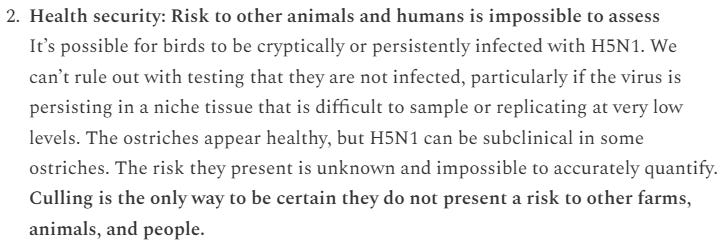
The stamping-out policy is not the only solution
While the CFIA are determined to enforce the WHOA stamping-out policy, this is not the only possible solution. While some, like Dr Rasmussen, push for vaccination of the birds, this is not a viable solution for birds that have already been infected and have antibodies. We do know that these birds have antibodies to H5N1 from Dr. Pelech’s testing of the eggs, but we don’t know if these are neutralising antibodies. Therefore, these birds must be tested by PCR for H5N1 and neutralising antibodies. Without that testing, there is no scientific evidence that this cull should proceed. Burn-out, not stamp-out: CFIA could also let the virus burn out and deem the birds virus-free after 12 months of no signs of illness. This 12-month period ends in just over 2 months, and CFIA has the option to hold off on the cull for 2 months and deem these birds infection-free.
Conclusion
The ostriches at Universal Ostrich Farm in Edgewood, British Columbia, should be spared from culling due to their robust survival and low risk of spreading H5N1. Despite an outbreak in December 2024 that killed 69 young ostriches, the remaining flock of over 400 has shown no illness for nearly 10 months, with older birds likely immune from prior exposure, as evidenced by H5N1 antibodies in their eggs. Unlike migratory waterfowl that spread the virus widely, ostriches shed less virus, don’t fly, and are isolated on a rural farm with enhanced biosecurity, making transmission to other birds or humans highly unlikely. Their unique role in producing valuable antibodies for diseases like H5N1 and COVID-19 further justifies their preservation, as culling would destroy a critical research asset. Instead of the Canadian Food Inspection Agency’s heavy-handed cull order, which lacks recent PCR evidence of active infection, regular testing could confirm the flock’s safety, allowing these healthy, resilient birds to continue contributing to groundbreaking science.
Sadly, many people will keep their head in the sand and not stand up for the survival of these birds. People need to rise up and support these birds. It is critical because the government’s overreach will not stop at these ostriches, with CFIA fixing its eyes on dairy cattle and people’s pets.
If you want to support UOF and stand up for these ostriches, please sign this Federal Petition: https://www.ourcommons.ca/petitions/en/Petition/Details?Petition=e-6857
Just like the COVID mRNA “vaccine” platform, which is neither safe nor effective, it is clear that the CFIA's push to enforce a cull of these birds has nothing to do with science. This farm is being persecuted for standing up against the CFIA’s stamping-out policy. There is a strong connection between these ostriches and the doctors and scientists who were silenced for standing on the facts against COVID-19 injections. Just like the Canadian truckers who stood up against the governmental mandates and got their bank accounts frozen and/or served jail time, it is clear that Canada is no longer a free country: if you stand up, the full force of the government’s hand will be upon you.
Just like Charlie Kirk, who stood for truth and doing what is morally right, these ostriches will soon be a CFIA martyr.
I stand with all those who are silenced for standing up for moral and scientific fact.
I hope that you will too!!!
Support the Science.
As a scientist who has been on the frontline for years, I rely on support from people who are keen on exposing the scientific truth and upholding pillars of evidence-based medical science. These are difficult times, but together we are strong. Together we can bring the courageous truth to light and ensure that this David beats Goliath.
If you want to support my research further, here are several options.
Courageous Truth is reader supported, consider being a paid subscriber.
Contact me directly via e-mail: research@davidspeicher.com.
Send an e-transfer to support@davidspeicher.com
Support my Give Send Go campaign.
Follow me on X. @DJSpeicher


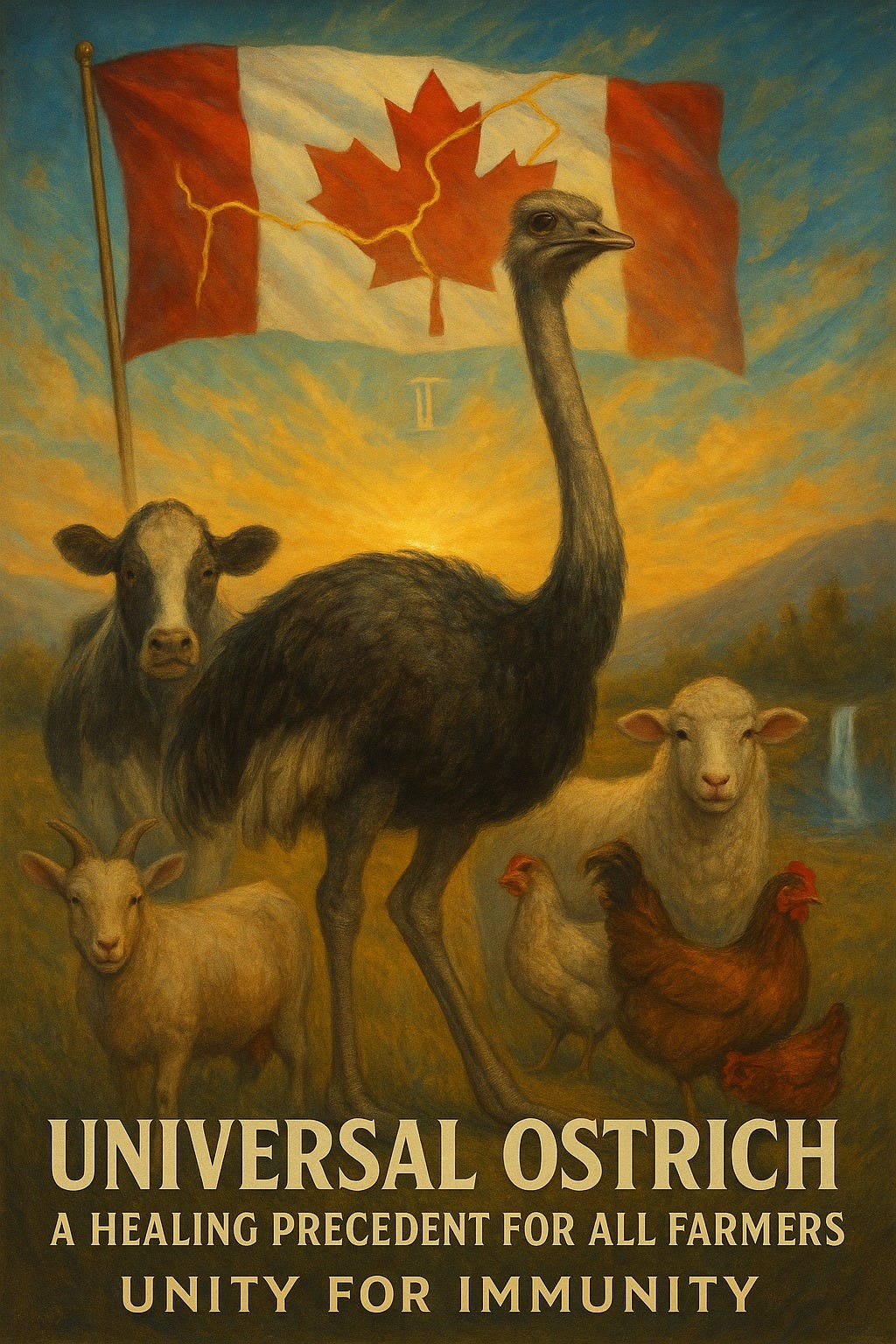
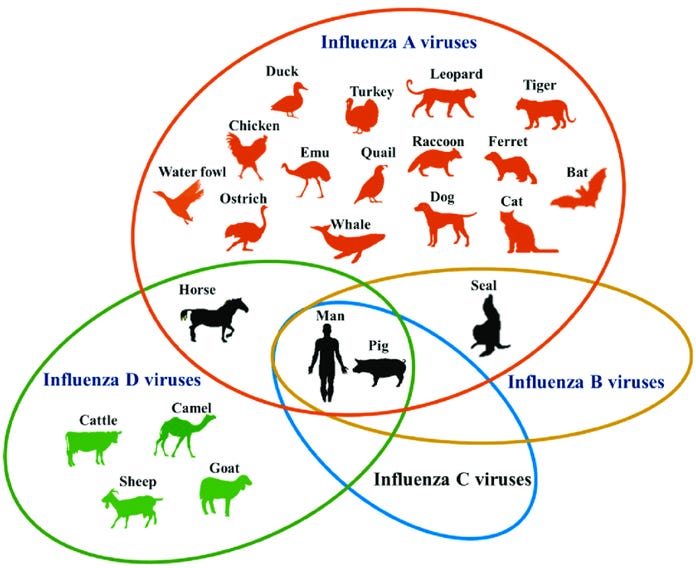

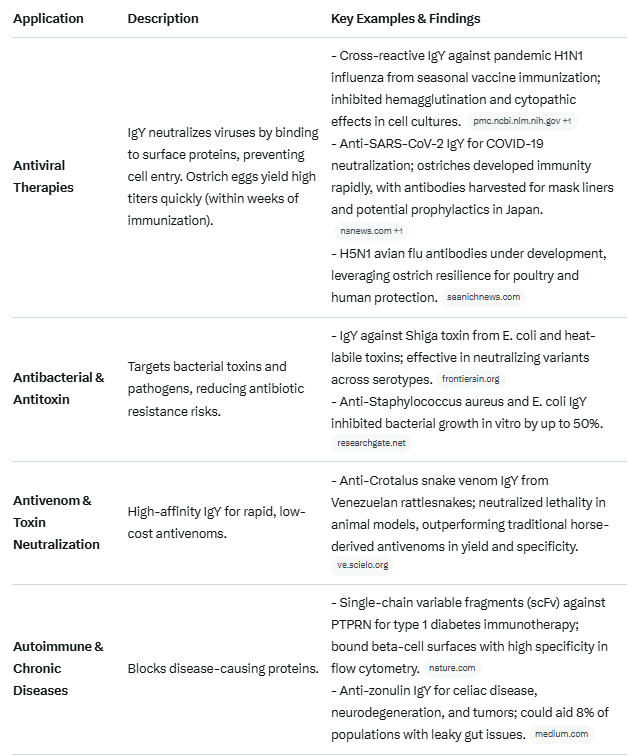
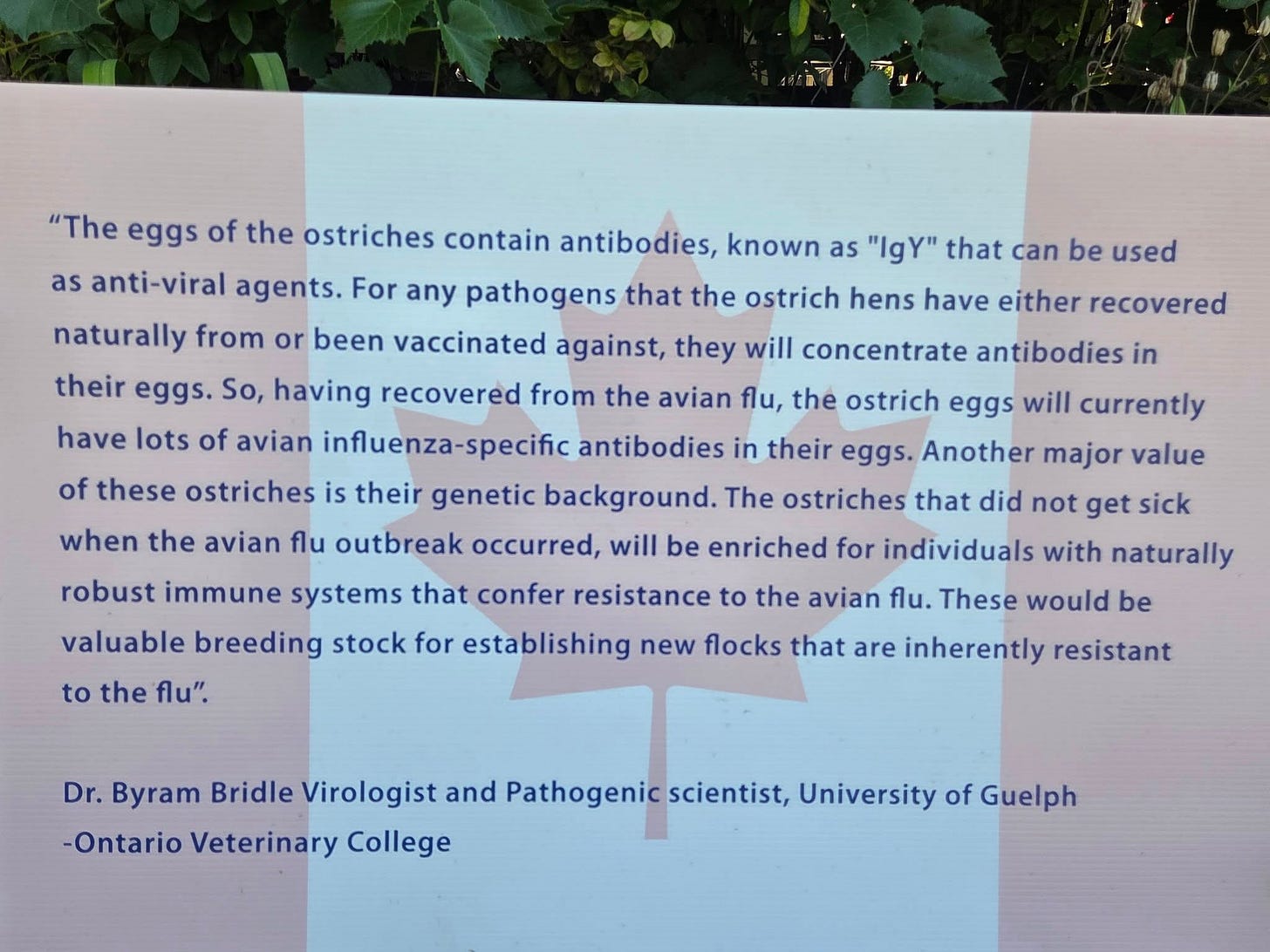
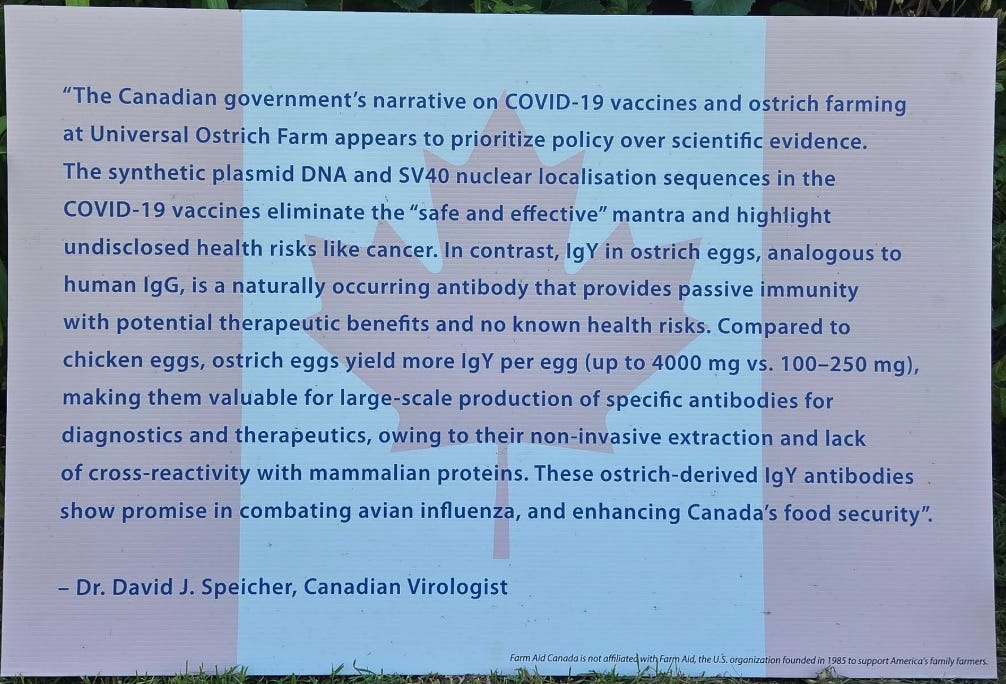
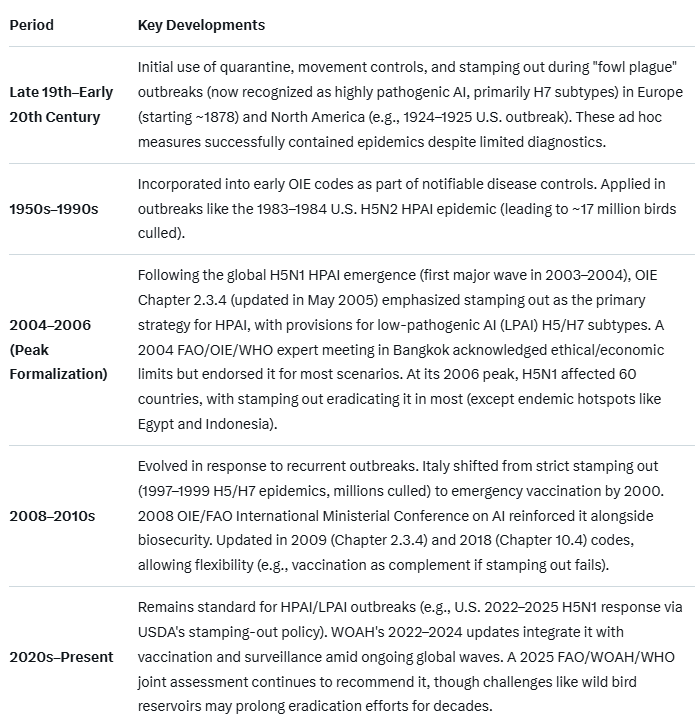
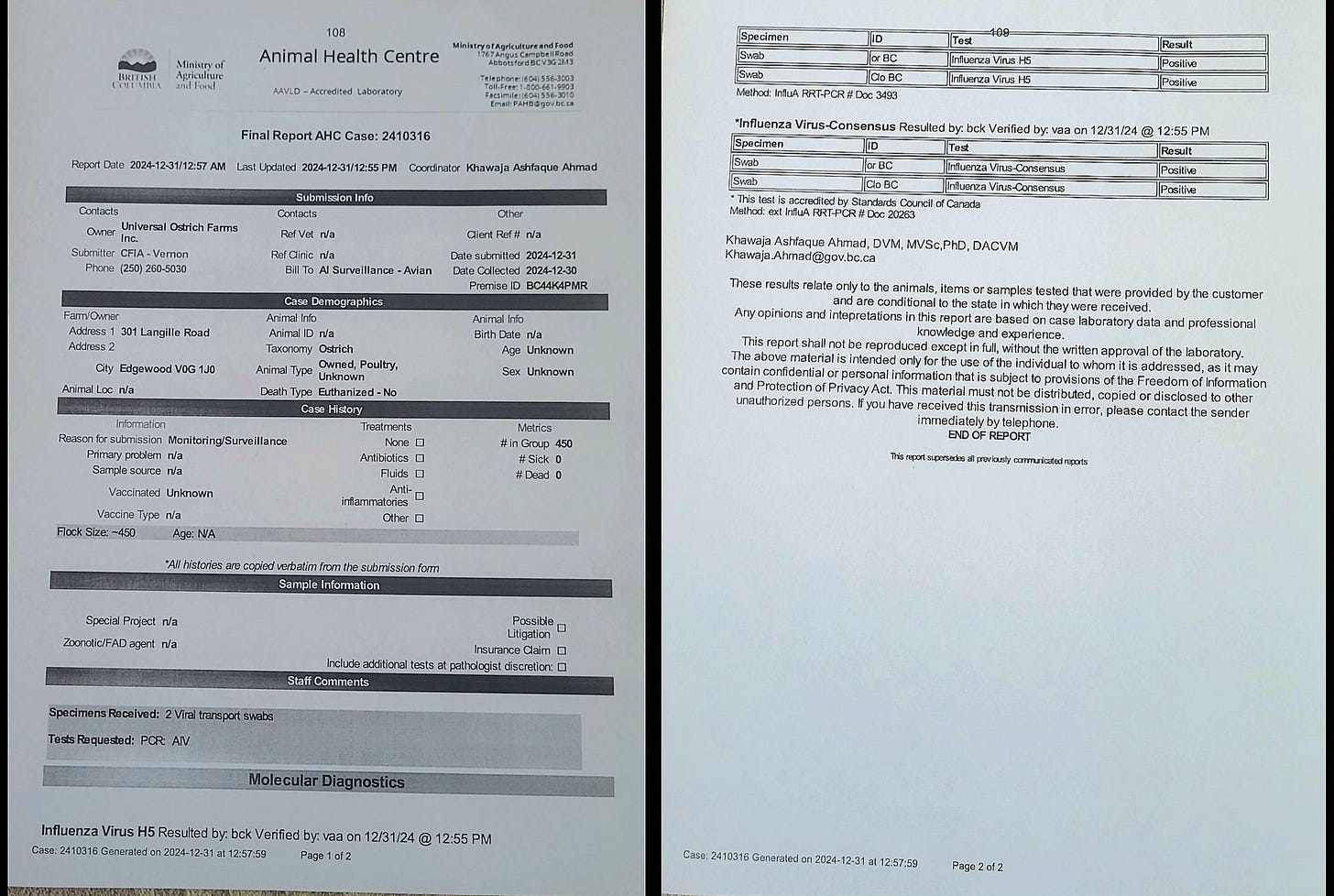
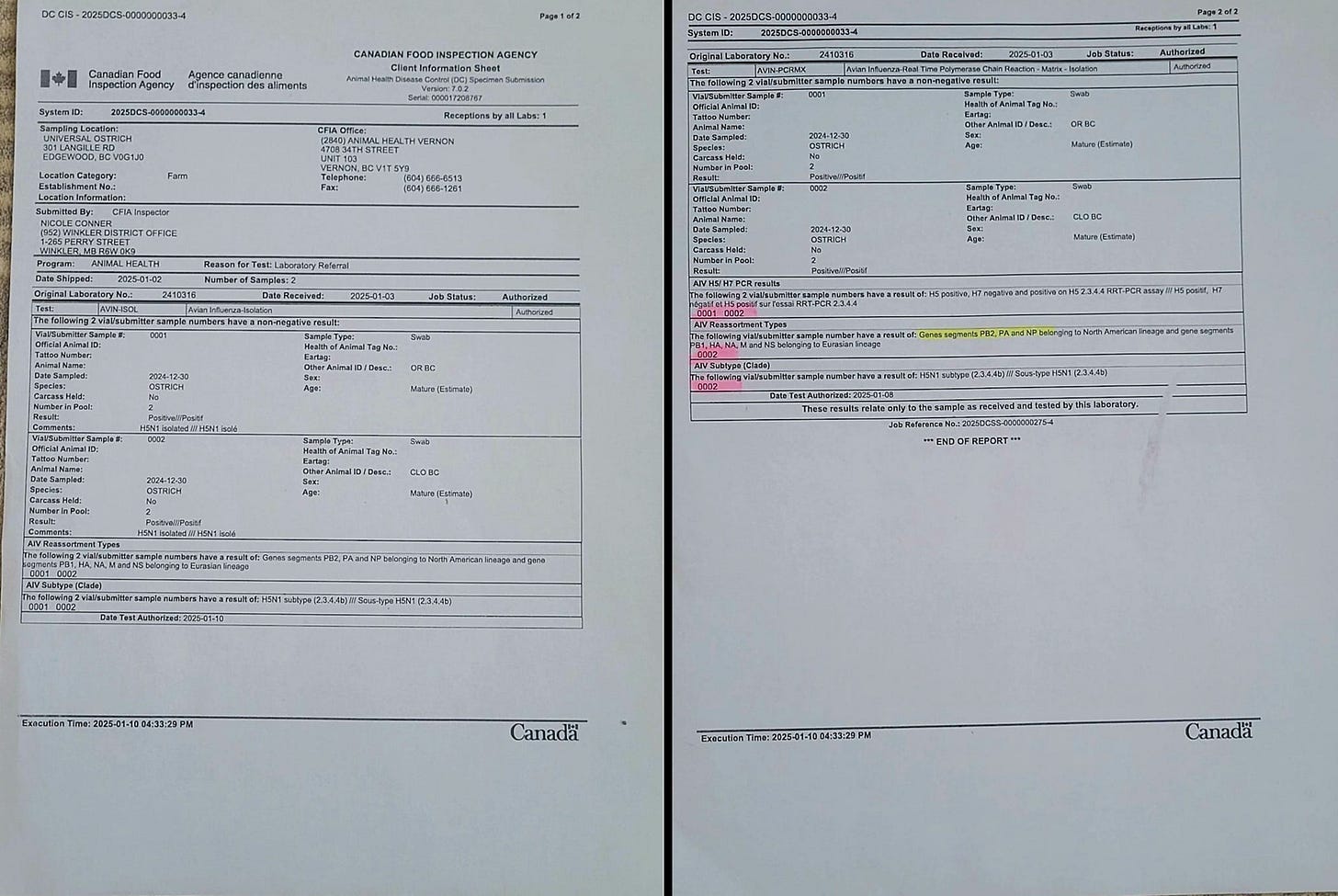
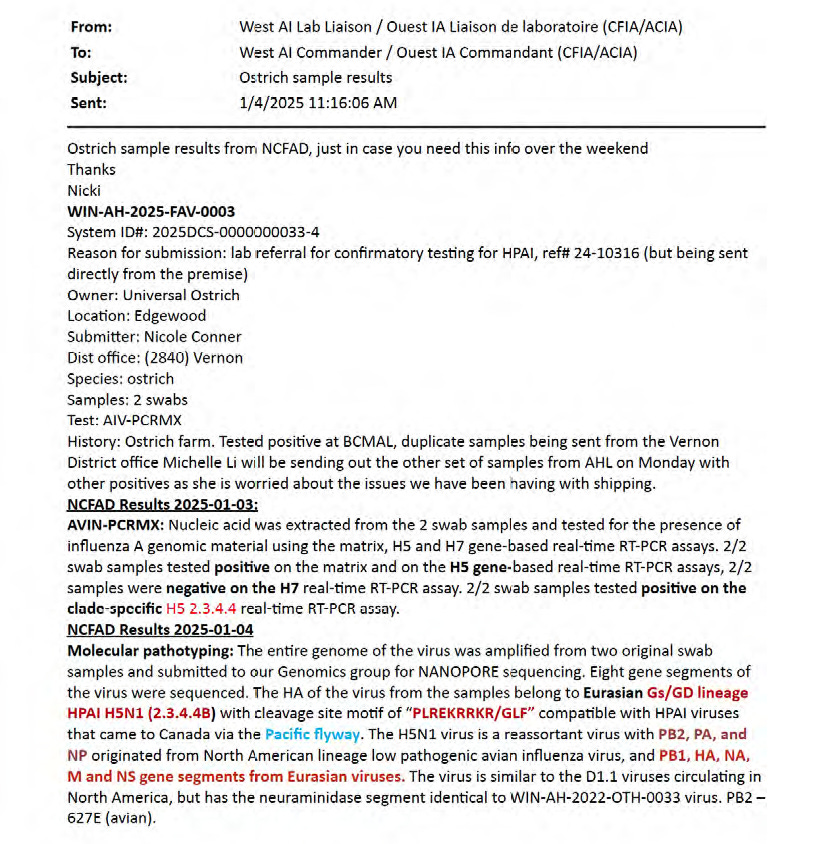
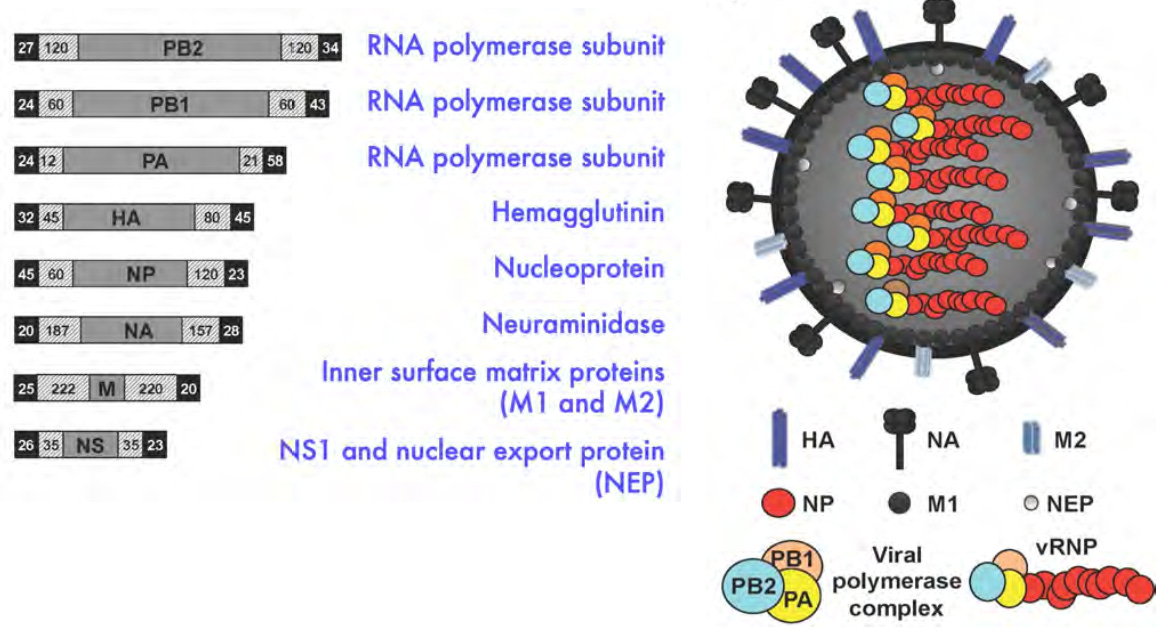
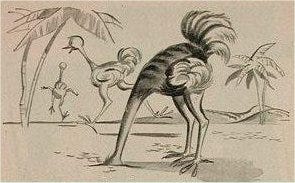

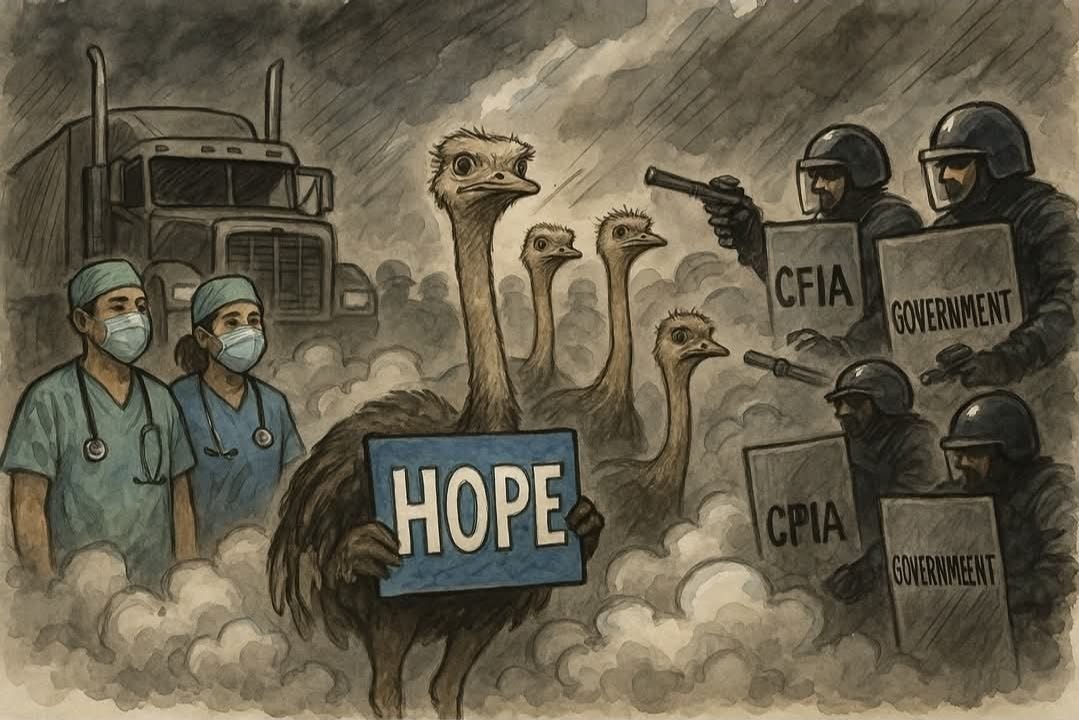
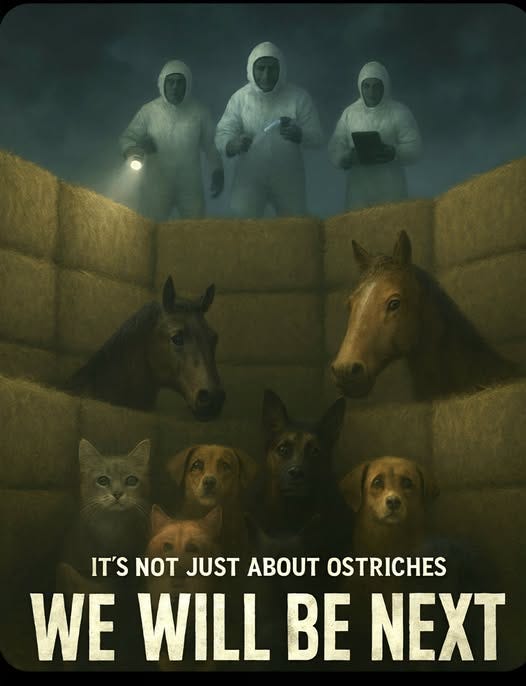
This is an excellent report and I hope it is shared with the Canadian Ostrich farm.
The point likening the infection of one MP and culling the entire caucus is striking indeed.
The government overreach must be challenged, particularly as no other birds appear to have succumbed to avian flu in almost a year.
Thank you for writing this piece and I do hope it may be used as expert testimony by the farm owners to challenge what seems to be a wild overreach of authority.
Update Weds. Oct. 15 , 2025
A Canadian Broadcasting Corp. (CBC) ‘comedy’ show has tackled the Universal Ostrich Farm standoff in B.C. in a way that acerbic commentator and podcaster Viva Frei likens to the most virulent strain of North Korean government propaganda.
The long-running weekly show is called “This Hour has 22 Minutes.”
The CBC is government funded (like the BBC).
It is frequently accused of bias and peddling the official federal-government line.
Quite rightly.
CBC ‘coverage’ of the historic Freedom Convoy in early 2022 proved shamefully one-sided, for instance. This was in perfect alignment with the decision of then Prime Minister Justin Trudeau to vilify any of the many Canadians opposed to coerced injections of unsafe, ineffective, and inadequately tested mRNA gene therapy products as nuisances, members of “a small fringe minority.”
Here is a YouTube link to this evening’s commentary — including a replay and breakdown of each portion of the 22 Minutes skit. It was posted by Viva Frei. He is a former Montrealer litigator who is now based in Florida. His real name is David Freiheit.
The Rebel News logo embedded in the screen simply indicates the video was first obtained by that news service, which is not government subsidized.
Buckle up‼️
https://youtu.be/HvszJXOPxDo?si=vWccy_Oj9BYRZH_h